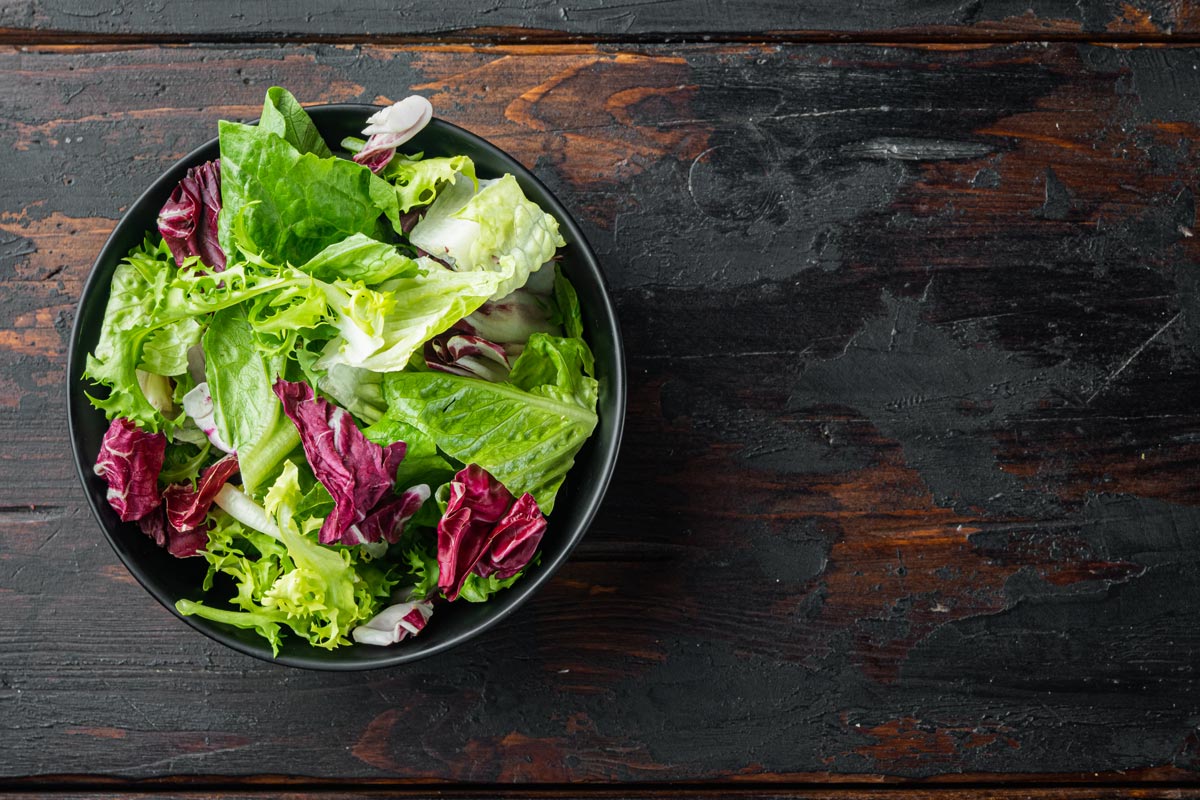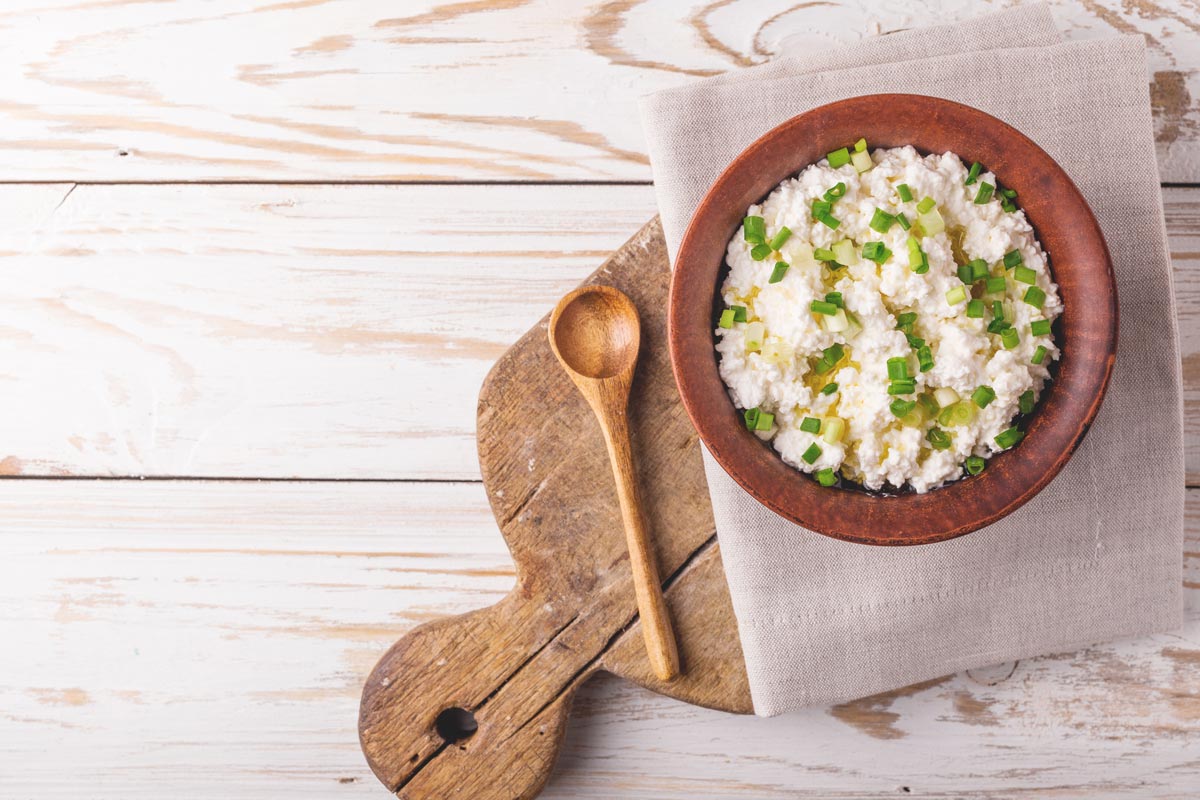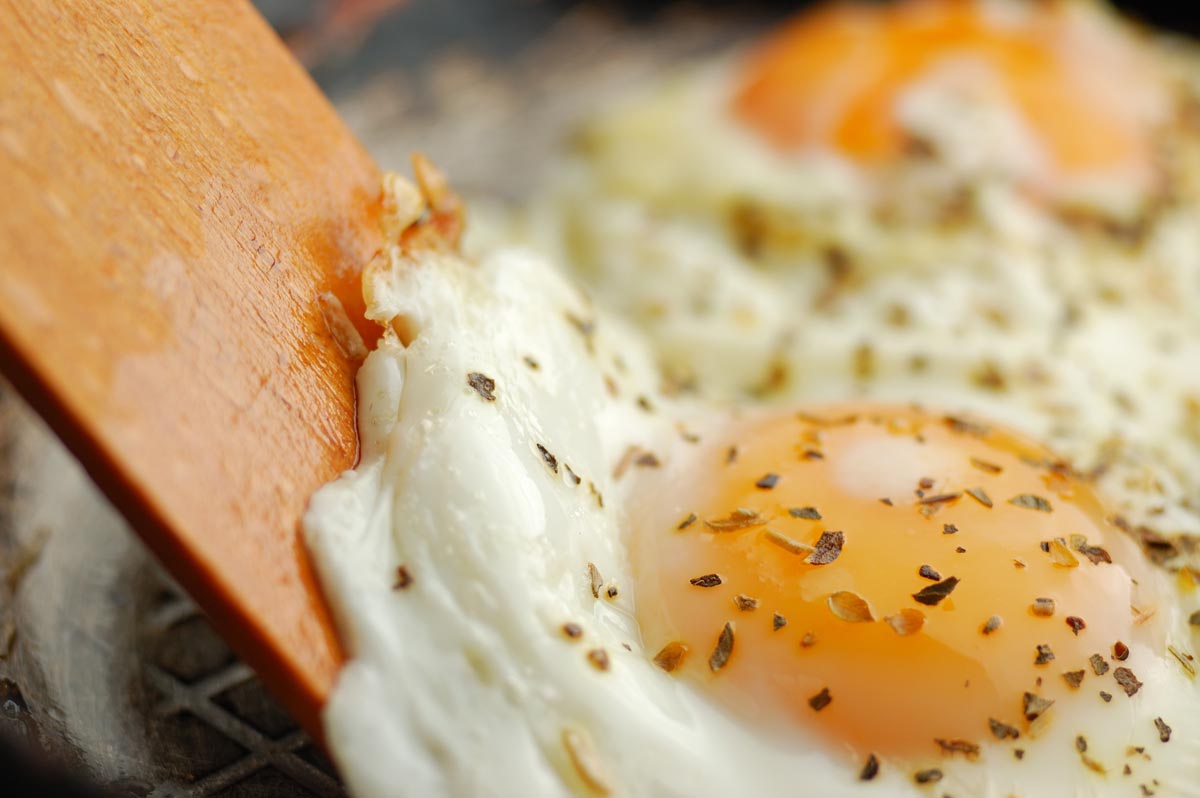Like an Italian deli in a bowl, this salad combines colorful greens with crispy roasted chickpeas, salami, and provolone. The original recipe was heavy on radicchio and endive, both of which can be bitter. We tamed them with the addition of romaine hearts and added tangy pepperoncini as an option. Substantial enough to serve as a light lunch or supper.
Ingredients
- 7 tablespoons extra virgin olive oil, divided use
- 1 tablespoon unsalted butter
- One 14.5-ounce can chickpeas, drained, rinsed, and drained again
- 2 garlic cloves, peeled, divided use
- Coarse salt (kosher or sea)
- 3 tablespoons good-quality red wine vinegar
- 1 1/2 teaspoons honey
- 1 teaspoon Dijon mustard
- 1/2 teaspoon hot red pepper flakes
- Freshly ground black pepper
- 2 hearts of romaine, cored and sliced
- 1 head radicchio, cored and sliced
- 1 head endive, thinly sliced
- 3 ounces sliced provolone cheese, torn into bite-size pieces
- 3 ounces cured fennel salami, thinly sliced, then cut into half-moons
- 6 pepperoncini, stemmed and sliced crosswise (optional)
Directions
Step 1
Heat 2 tablespoons of the olive oil and the butter in a large nonstick skillet over medium-high heat until the butter melts. Add the chickpeas and 1 garlic clove; season with salt. Cook, tossing occasionally, until the chickpeas are browned and crisp, 6 to 8 minutes.
Step 2
Meanwhile, whisk the vinegar, honey, mustard, red pepper flakes, and the remaining 5 tablespoons of oil in a large serving bowl to combine. Finely chop half of remaining garlic clove (discard the rest unless you really like garlic) and add to the dressing; season with salt and black pepper.
Step 3
Add the romaine, radicchio, endive, provolone, salami, and pepperoncini, if using, to the dressing and toss to coat; season with salt. Add the chickpeas and toss again to combine.
Serves 4 to 6 — Recipe adapted from bonappetit.com



